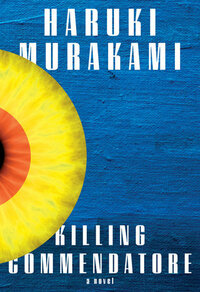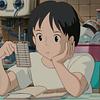You need to sign in or sign up before continuing.
Take a photo of a barcode or cover
mysterious
reflective
slow-paced
Plot or Character Driven:
A mix
Strong character development:
Yes
Loveable characters:
Yes
Diverse cast of characters:
Complicated
Flaws of characters a main focus:
No
dark
emotional
mysterious
reflective
tense
medium-paced
Plot or Character Driven:
A mix
Strong character development:
Complicated
Loveable characters:
Complicated
Diverse cast of characters:
No
Flaws of characters a main focus:
No
Graphic: Misogyny, Sexism, Sexual assault
mysterious
reflective
medium-paced
Plot or Character Driven:
A mix
Strong character development:
Yes
Loveable characters:
Yes
Diverse cast of characters:
No
Flaws of characters a main focus:
Yes
slow-paced
not much happens and there are a lot of weird lines about a 13 year old's boobs.
Reading Haruki Muralami is like coming home. It is just where I feel happiest.
My first (completed) Murakami and I have SO MANY QUESTIONS! (But a lot of them were answered in an interview he did with the New Yorker; and the answers didn't make me that happy.) There's so much hype around this author that my reading experience was tainted by feelings of Should this be the first book that I read? Is this representative of his writing? If I hate this will I never try another of his books? And also, waiting for it to turn weird. Which it does, eventually, but not until you are caught up with the very appealing story. This isn't really as expansive a novel as you would expect--700 pages usually comes along with sweeeeeeeeping historical or family saga, or some kind of uber-universal theme (like Powers' Overstory). Instead, we spend a lot of time in a charming old house remotely situated in the mountains of Japan. Our hero, a painter, goes from his studio to his kitchen to his living room. Sometimes he goes outside and looks at a big hole in the ground. Sometimes he goes on car trips around the country. He has a few visitors, usually the same ones. He paints, he thinks, he listens to music, he cooks, he talks on the phone. He looks out the window. Really, there's not much going on until the weird part, which I won't give away here.
So I cannot figure out why this book had me so mesmerized. I really wanted to join the nameless narrator in the house and think about painting and music with him. The weird stuff was less appealing, but the suspense was brilliantly handled. It was sort of like listening to a symphony, with the different parts all laid out, and where some movements are full of energy and others are more contemplative. If this is typical Murakami, then sign me up.
However, I did have some gripes. There is a lot of repetition of facts, most of which the reader doesn't need. I'm not sure if this is a side-effect of translation, specifically Japanese translated into English, or maybe typical of Murakami's style, but in a long book like this a bunch of red-pencil tightening would really help. Also, I was a little creeped out by the character of Mariye--or at least by her relationship with the narrator. Her obsession with her breasts was odd and off-putting, especially when related from an adult male POV. And, ultimately, the ending did not pay off for me at all, and after reading the interview with Murakami, it kind of pissed me off. In the interview he says that he never really knows where he's going with a story or novel--it takes on a life of its own. That's fine; I get that. It happens with my writing too. But if you are writing a novel about an Idea or about Metaphors, then you really should have a concrete framework set up so that it all makes sense. I'm not willing to go 700 pages and then say, huh? What just happened? I'd like a nice bow of an ending to tie it up.
Lately I've been avoiding reading any descriptions of books before I read them. I love to be surprised. So, in this instance, I was totally surprised to learn from the flap copy that this is an homage to The Great Gatsby. Wha? I get that about Menshiki being Gatsby, and the narrator as being Nick. And maybe Mariye being Daisy? But there's so much more to this story than that other plot. Also, what's with all the descriptions of people's clothing and cars? Subaru Forrester, Jaguar XE (or whatever), Toyota Corolla, Prius. Cashmere sweaters, wool skirts, tan slacks, rounded collars. Are these the details that obsess a painter? Or are they a quirk of Murakami's? I guess I'll find out when I read Norwegian Wood.
So I cannot figure out why this book had me so mesmerized. I really wanted to join the nameless narrator in the house and think about painting and music with him. The weird stuff was less appealing, but the suspense was brilliantly handled. It was sort of like listening to a symphony, with the different parts all laid out, and where some movements are full of energy and others are more contemplative. If this is typical Murakami, then sign me up.
However, I did have some gripes. There is a lot of repetition of facts, most of which the reader doesn't need. I'm not sure if this is a side-effect of translation, specifically Japanese translated into English, or maybe typical of Murakami's style, but in a long book like this a bunch of red-pencil tightening would really help. Also, I was a little creeped out by the character of Mariye--or at least by her relationship with the narrator. Her obsession with her breasts was odd and off-putting, especially when related from an adult male POV. And, ultimately, the ending did not pay off for me at all, and after reading the interview with Murakami, it kind of pissed me off. In the interview he says that he never really knows where he's going with a story or novel--it takes on a life of its own. That's fine; I get that. It happens with my writing too. But if you are writing a novel about an Idea or about Metaphors, then you really should have a concrete framework set up so that it all makes sense. I'm not willing to go 700 pages and then say, huh? What just happened? I'd like a nice bow of an ending to tie it up.
Lately I've been avoiding reading any descriptions of books before I read them. I love to be surprised. So, in this instance, I was totally surprised to learn from the flap copy that this is an homage to The Great Gatsby. Wha? I get that about Menshiki being Gatsby, and the narrator as being Nick. And maybe Mariye being Daisy? But there's so much more to this story than that other plot. Also, what's with all the descriptions of people's clothing and cars? Subaru Forrester, Jaguar XE (or whatever), Toyota Corolla, Prius. Cashmere sweaters, wool skirts, tan slacks, rounded collars. Are these the details that obsess a painter? Or are they a quirk of Murakami's? I guess I'll find out when I read Norwegian Wood.
challenging
emotional
mysterious
tense
medium-paced
Plot or Character Driven:
Character
Strong character development:
No
Loveable characters:
Complicated
Diverse cast of characters:
Complicated
Flaws of characters a main focus:
Yes
If you love painting, you should read this book.
mysterious
reflective
slow-paced
Plot or Character Driven:
Character
Strong character development:
Complicated
Loveable characters:
No
Diverse cast of characters:
No
Flaws of characters a main focus:
Complicated






